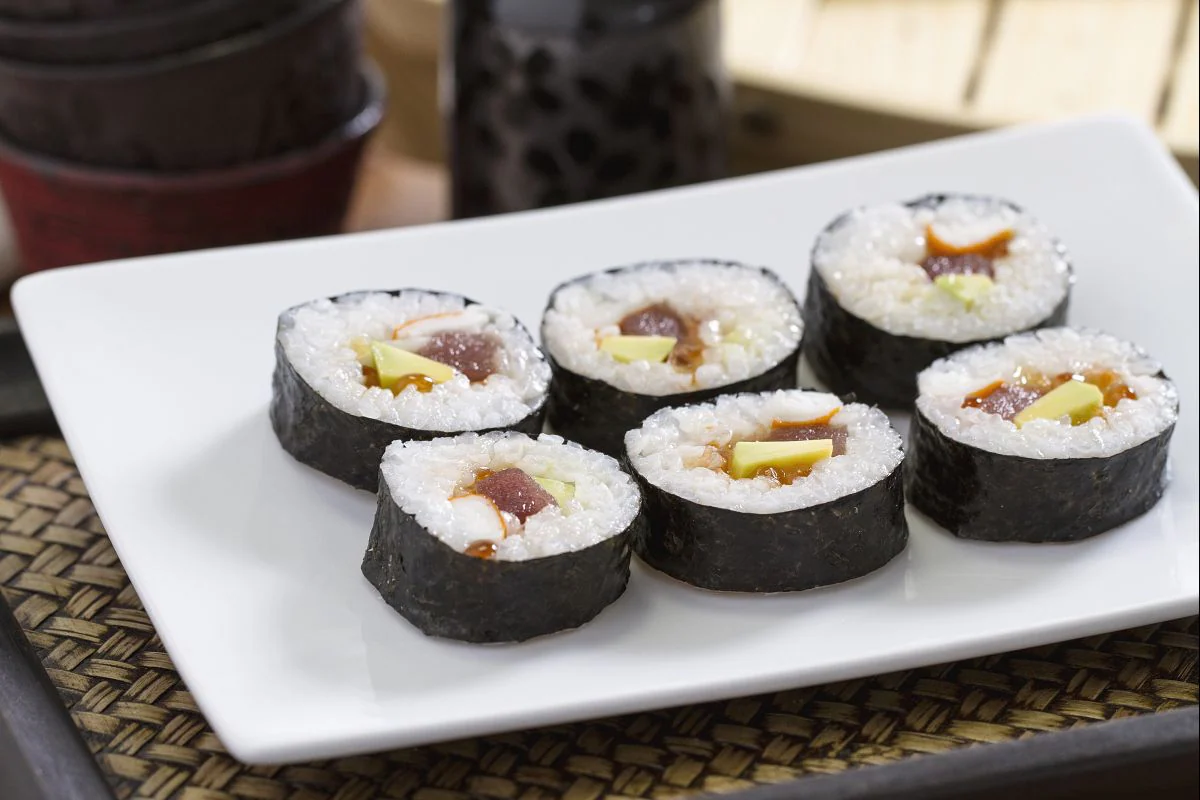Salmon Temaki
- Difficult
- 60 min
- Kcal 673

Futomaki sushi roll is pretty much a standout in Japanese cuisine. It's super colorful and really packs a punch of flavors in every bite. A classic futomaki recipe wraps a whole sheet of nori around rice and at least four different fillings. And you know what? People often choose fresh tuna or salmon, surimi, crunchy cucumber, or tender carrots that have been blanched. Sometimes you'll find pops of fish roe or creamy avocado. Really, each piece is a fun surprise.
The rice is key. It needs to have the right moist and sticky texture so the roll holds together. It's crucial, to be honest—part of homemade sushi techniques. Once assembled, it's sliced into thick rounds, perfect for finger food. So, no fuss. In Japan, futomaki is a favorite at festivals, picnics, and even everyday lunches. It's easy to share and looks super nice on a plate.
People often experiment with futomaki variations, swapping out the usual futomaki ingredients for stuff like omelette strips or pickled veggies. And listen, this mix of crunchy, sweet, and sometimes even tangy flavors? Keeps things interesting for sure. The bright colors make it a dish that catches your eye immediately. Some regions in Japan add local veggies or seafood for a unique twist. But, the core idea? A big sushi roll packed with lots of good stuff.
Learning how to make futomaki gives you a taste of traditional sushi without needing to get too fancy. Plus, it’s a fun and relaxing way to enjoy Japanese sushi rolls at home or wherever you like to eat with friends. Whether you stick with the futomaki fillings or create your own combo, you'll end up with something fresh and really, really bursting with flavor. So, gather your ingredients—seriously good ones—and enjoy making this versatile and delicious dish that's both a feast for the eyes and the palate.

To prepare futomaki, place a whole sheet of nori seaweed on the bamboo mat 1 (if you prefer, you can cover it with plastic wrap), with the smooth and shiny side facing down. Wet your hands in a bowl with water, possibly acidulated with a few tablespoons of rice vinegar, and take about 100 grams (3.5 oz) of sushi rice. Wetting your hands is necessary because the rice is very sticky, preventing it from sticking to your hands. Spread the rice over the surface of the seaweed (you can use a wooden spatula to help), leaving a couple of centimeters (0.75 in) of seaweed free on the top edge 2. The thickness of the rice should not be too high. If you like, you can take a small amount of wasabi and spread it in the center on the rice, not too much because wasabi is spicy 3. If you don't like wasabi, you can skip this step.

Take about a tablespoon of fish roe 4 and place it in the center of the rice 5, then arrange the sticks of various ingredients in any way you like 6, remembering that futomaki requires at least 4 ingredients inside.

You can also increase the amount of wasabi, spreading it over the surface of the fish 7. We filled the futomaki with salmon roe, a halved surimi, fresh tuna sticks (but you can also use salmon), cucumber slices, avocado, which should be soft and well-ripened, or carrot, blanched for a couple of minutes to make them more tender (8-9). Remember that the sticks should be about 1 cm (0.4 in) thick and placed in the center, cutting the excess or adding a piece to cover the entire length of the roll.

Now take the lower edge of the mat 8 and, pressing the central ingredient inward with your fingers, roll everything up like a spring roll. Keep gentle pressure on the roll to keep it compact until you see the strip of seaweed not covered by rice 9; then move the roll a little forward so that the uncovered strip of nori seals everything: the moisture of the rice will act as an adhesive. At this point, shape the roll, pressing uniformly with your hands along the length 10.

Here is the futomaki ready 11: push inward the protruding rice grains on the sides. Now, cut the futomaki: place it on a cutting board and wet the knife blade with acidulated water 14; cut it in half, place the two obtained pieces side by side, then cut them into six equal parts 15, so you will get 12 pieces of futomaki.